








Midweek Update 14 September 2023Google Banner Ad THIS WEEK IN MIDWEEK UPDATE FAA closes SpaceX Starship mishap investigation. Boeing showcases F-15EX for Poland's Air Dominance. New empennage for R66 turbine helicopters receives FAA approval. Bristow secures early delivery positions for five Elroy Air Chaparral aircraft. Vertical VX4 programme moves to the next phase. Gabonese C295 arrives home. H2FLY and partners complete world's first piloted flight of liquid hydrogen powered electric aircraft. This week in History - The U. S. balloon, Double Eagle II, becomes the first balloon to cross the Atlantic. Bonus Video - PZL Wilga first engine run. 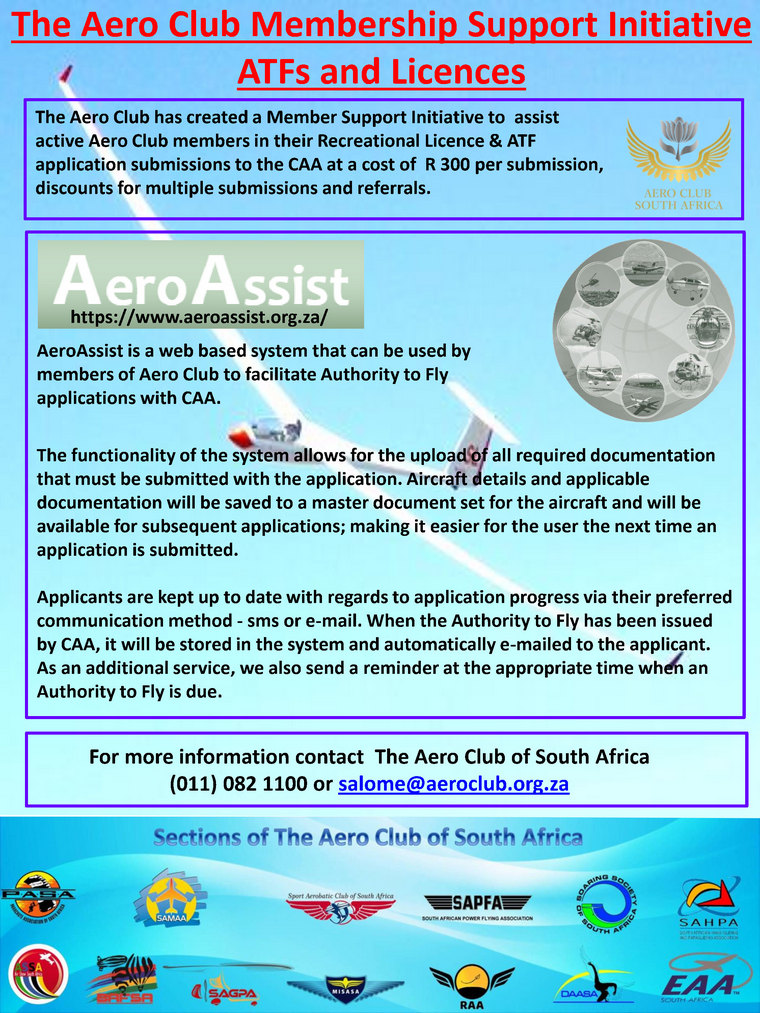   16 Vans RV fly-in at Kitty Hawk. Contact Frank van Heerden E-mail: frankvh@mweb.co.za for more information 16 EAA Chapter 322 Pancake Fly in at Silver Creek Estate. 16 & 17 SAC Limpopo Regionals Phalaborwa airfield. Contact Annie Boon E-mail: info@anniesaviationcorner.com 23 JLPC @ Baragwaneth Fly In Day. Live, Music, Fly and Food. 30 Saldanha West Coast airshow. Contact Clive Coetzee E-mail: clivecoetzee@sun.ac.za Cell: 084 614 1675 29 Sept to 1 November. EAA Sun 'n Fun New Tempe Bloemfontein. Kassie 080 404 1642 or Lucas 082 566 0656 30 Heidelberg Great Train Race Heidelberg Airfield. For more information contact 082 560 2275 30 to 7 October Gliding Nationals at Potchefstroom - Carol Clifford bobcar@global.co.za  West Coast FlyFPV SA Championship and West Coast RC Flight Championship. Clive Coetzee E-mail: clivecoetzee@sun.ac.za Cell: 084 614 1675 6 & 7 SAC World Advanced Aerobatic Championships training camp venue TBA. Annie Boon E-mail: info@anniesaviationcorner.com 6 to 8 EAA Sun 'n Fun Tempe Airfield. Neil Bowden E-mail: airadventuresa@gmail.com 7 EAA Chapter 322 monthly gathering 18h00 Tempe airfield. Contact Neil Bowden E-mail: airadventuresa@gmail.com 14 Krugersdorp Flying Club Fly In. RSVP via Whatsapp 083 577 8894 14 to 22 SAC World Advanced Aerobatic Championships training in the USA. Contact Annie Boon E-mail: info@anniesaviationcorner.com 24 October to 4 November. SAC Advanced World Aerobatics Championships Las Vegas. Contact Annie Boon E-mail: info@anniesaviationcorner.com 28 October SAPFA SA Landing Championships - Brits & Stellenbosch airfields. Contact Ron Stirk E-mail: melron@mweb.co.za Cell: 082 804 445 0373 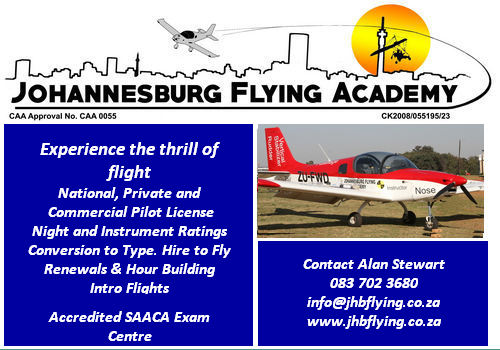   BELL 412 HELICOPTERS SUPPORT SOMALIA'S COUNTER-INSURGENCY EFFORTS The delivery of Bell 412 helicopters to Somalia's government has provided a critical boost to its counter-insurgency capabilities, marking a significant development in the country's long-running dispute with the al-Shabaab terrorist organization. The helicopters were initially used for casualty evacuation, but they can also play a role in combat operations, a source told the publication, as Somalia battles to protect its territory and maintain regional stability. It is not clear from where the helicopters originated. According to Shephard Media, whether Somalia paid for the Bell 412s or received them as a gift is still unknown. Scramble magazine reported that earlier this year, two ex-Italian AgustaBell AB412s (6O-AAG and 6O-AAH) arrived in Somalia, but it's not clear if these are the same helicopters. Somali news outlets have reported that pilots, technicians and Special Forces have undergone training in Turkey, indicating a possible connection there. The fact that Turkey sent utility trucks and armoured vehicles to Somalia in 2020 as part of a larger military and financial cooperation arrangement highlights the two countries' cooperative efforts. The Somali administration still faces significant obstacles despite some gains against al-Shabaab. However, the African Union Transitional Mission in Somalia (ATMIS), which is commencing a phased departure and handing over security responsibilities to Somali security forces, has kept the security environment unpredictable. Along with the Bell 412 helicopters, a large amount of military hardware has arrived recently in Somalia. This reportedly includes ZU-23 anti-aircraft guns, 120 mm mortars, and other weapons. Several nations, including the United States, have provided military assistance to Somalia - for example, six Puma M36 armoured vehicles were delivered by the United States African Command (AFRICOM) in July 2021 to assist Somali security forces. The United States has made other donations to the Somali military, including Bastion armoured personnel carriers, which some perceive as a move to balance Turkey's expanding influence in the area. Most recently, in January the US handed over $9 million worth of light and heavy machine guns, support and construction vehicles, explosive ordinance disposal kits, medical supplies and other equipment to the Somali National Army to support its fight against al-Shabaab.  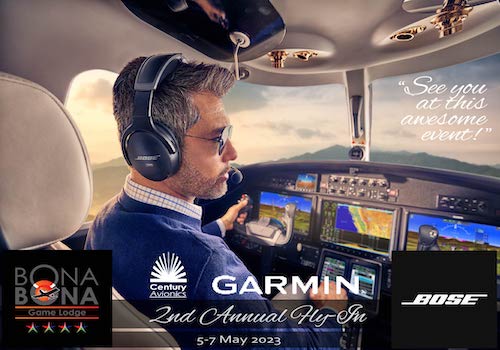 FAA CLOSES SPACEX STARSHIP MISHAP INVESTIGATION The FAA has closed the SpaceX Starship Super Heavy mishap investigation. The final report cites multiple root causes of the 20 April 2023, mishap and 63 corrective actions SpaceX must take to prevent mishap reoccurrence.  The closure of the mishap investigation does not signal an immediate resumption of Starship launches at Boca Chica. SpaceX must implement all corrective actions that impact public safety and apply for and receive a license modification from the FAA that addresses all safety, environmental and other applicable regulatory requirements prior to the next Starship launch. SpaceX is also implementing a full suite of system performance upgrades unrelated to any issues observed during the first flight test. For example, SpaceX has built and tested a hot-stage separation system, in which Starship's second stage engines will ignite to push the ship away from the booster. Additionally, SpaceX has engineered a new electronic Thrust Vector Control (TVC) system for Super Heavy Raptor engines. Using fully electric motors, the new system has fewer potential points of failure and is significantly more energy efficient than traditional hydraulic systems. SpaceX also made significant upgrades to the orbital launch mount and pad system in order to prevent a recurrence of the pad foundation failure observed during the first flight test. These upgrades include significant reinforcements to the pad foundation and the addition of a flame deflector, which SpaceX has successfully tested multiple times. Testing development flight hardware in a flight environment is what enables our teams to quickly learn and execute design changes and hardware upgrades to improve the probability of success in the future. We learned a tremendous amount about the vehicle and ground systems during Starship's first flight test. Recursive improvement is essential as we work to build a fully reusable launch system capable of carrying satellites, payloads, crew, and cargo to a variety of orbits and Earth, lunar, or Martian landing sites. 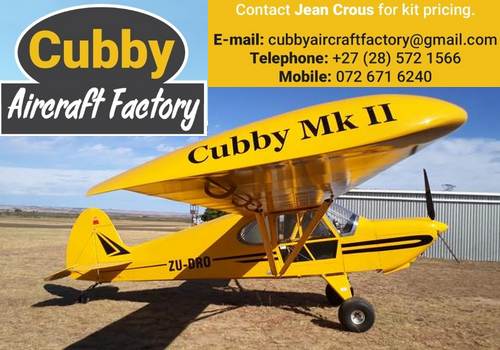 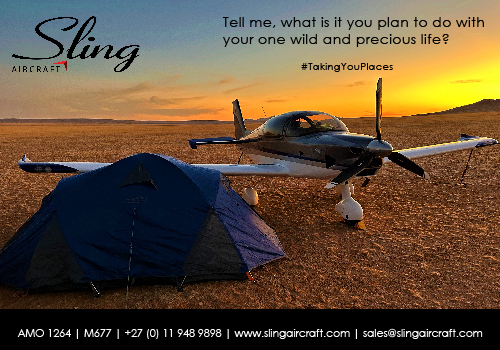 BOEING SHOWCASES F-15EX FOR POLAND'S AIR DOMINANCE Boeing [NYSE: BA] is showcasing the F-15EX fighter aircraft to Poland as a potential U.S. Department of Defence Foreign Military Sales program. The announcement was made at the annual MSPO International Defence Industry Exhibition where Boeing is highlighting advanced defence systems, capabilities and services. "Poland's interest in the F-15EX confirms its dedication to the preparedness and effectiveness of its military forces," said Tim Flood, senior director, Global Business Development for Europe and Americas. "The F-15EX offers superior interoperability, supportability and affordability along with a robust industry plan that would support Poland's goal of developing independent defence capabilities." Boeing has made significant investments in the F-15EX making it the most capable multirole fighter aircraft in production today. The aircraft offers improved survivability and capability with: fly-by-wire flight controls, a new electronic warfare system, an all-glass digital cockpit, the latest mission systems and software capabilities, as well as the ability to carry advanced hypersonic weapons. "The F-15EX is the world's most advanced fighter with unmatched capability, lethality and survivability and is the right fit to strengthen Poland's security needs," said Rob Novotny, director, Business Development for Boeing's F-15 program. "Through enhanced interoperability with U.S. and NATO forces, capacity for technology growth and a 20,000+ hour economic operational airframe life, Poland can expect the F-15EX to win in existing and future threat environments." The F-15EX is in production with two aircraft delivered to the U.S. Air Force. Indonesia recently became the 8th country to select the F-15 and will become the first export customer of the latest FX variant when the sale is finalized. Boeing has been present in Poland for more than 30 years. With headquarters in Warsaw, Boeing Digital Solutions & Analytics operations in Gdansk and Parts & Distribution Services in Rzeszow, Boeing employs more than 1,000 people in Poland and is currently establishing strong engineering capability in all of its three locations. In addition to its growing footprint in-country, Boeing is an important partner of the Polish aviation industry and has strong relationships with local communities, industry, airlines, Polish Government and the Polish Armed Forces. 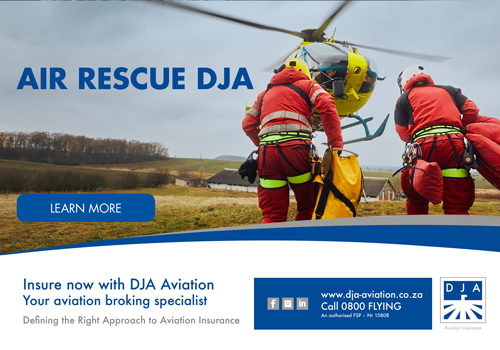  Robinson Helicopter Company announces FAA certification of a new empennage configuration for the R66 Turbine. Following years of development and testing, the new empennage provides enhanced roll stability during high-speed flight. The configuration replaces the existing 2,000-hour TBO horizontal stabilizer with a 4,000-hour TBO symmetrical horizontal stabilizer mounted on the tailcone and positioned forward of the original. ROBINSON PICThe new empennage configuration is standard on all new production FAA-registered R66 Turbine helicopters and will include a new 4,000-hour TBO tailcone. Commencing with R66 S/N 1279, Robinson will begin delivering FAA-registered R66 production aircraft with the new empennage and tailcone. Robinson is working with civil airworthiness authorities around the world to obtain foreign validations. As these regulatory approvals are obtained, foreign-registered R66s will be delivered with the new empennage. 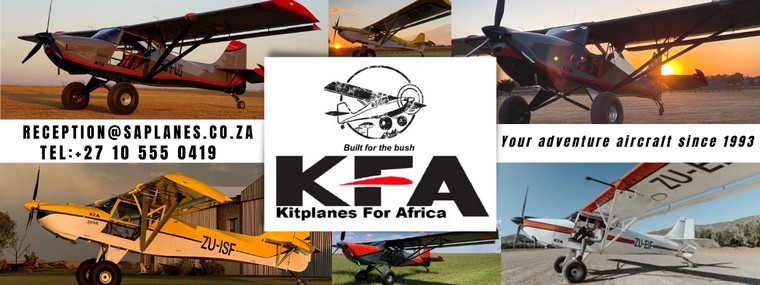 Bristow Group Inc. (NYSE: VTOL), the world's leading global provider of innovative and sustainable vertical flight solutions, has reserved early delivery slots for five of Elroy Air's vertical take-off and landing (VTOL) cargo systems, the Chaparral. Bristow signed a Letter of Intent (LOI) with Elroy Air to pre-order 100 Chaparral hybrid-electric cargo VTOL aircraft last year. "There is an increasing demand for the movement of time-sensitive cargo for logistics, health care and energy applications. Securing these early delivery positions underscores our commitment to leading the Advanced Air Mobility market and builds on our 75+ year legacy of vertical lift innovations," said Bristow Executive Vice President and Chief Transformation Officer Dave Stepanek. "At Bristow, we're excited to usher in a new era of vertical lift operations and collaborate with Elroy Air to meet the emerging market of express shipping cargo in cities and regions without relying on existing or new airport infrastructure." The Chaparral is a "lift plus cruise" hybrid eVTOL cargo aircraft that leverages the benefits of both conventional turbines and electric propulsion, for efficient autonomous operation and longer range. Engineered with an advanced carbon composite airframe, Chaparral can be configured to ship inside a 40-foot container or in aircraft for rapid global deployment. Elroy Air has introduced advanced modular cargo pods that complement the Chaparral's capabilities. The pods are pre-loaded by ground personnel and autonomously retrieved by the Chaparral aircraft before takeoff. Upon arrival at the delivery location, the aircraft autonomously lowers the pod to the ground. The Chaparral aircraft then retrieves the next pre-packed pod, creating a seamless bi-directional conveyor belt through the sky. "Gtting to this stage of the process - reserved delivery positions secured with deposits, underscores our relationship built with Bristow and we are extremely pleased to be at this stage in development," said Elroy Air's VP of Business Development and Strategy, Kofi Asante. "Bristow's expertise is a strong catalyst for bringing new aircraft like ours to the market. Their rotorcraft expertise, global footprint, and innovative mindset have made them a strong partner and we are excited for the next chapter together. We look forward to seeing the Chaparral operate internationally as part of the Bristow fleet." 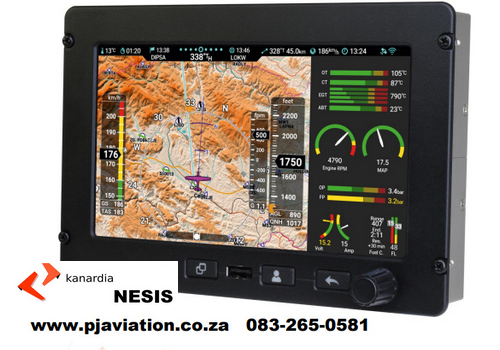  Vertical Aerospace (Vertical) [NYSE: EVTL], a global aerospace and technology company that is pioneering zero-emissions aviation, today provides an update on its overall programme. Vertical concluded its remote thrust borne flight test campaign in July 2023, as the first full-scale VX4 prototype reached its target speed of 40kts (70 kmph), demonstrating exceptional overall stability and control. Performance targets were generally exceeded by 10-30% during hover and low speed flights. The prototype performed especially well in sustained hover, typically the most challenging regime for a VTOL aircraft, where it maintained level flight for longer than anticipated. The aim of these thrust borne flight tests was to verify acceptable stability, battery efficiency and control characteristics, aerodynamics, structural loads, performance and vibration throughout this speed range - all of which were achieved. Vertical continued further uncrewed flight tests following the completion of the remote thrust borne flight test campaign. The purpose of these was to understand how the aircraft performed outside of its expected operating conditions before the aircraft's planned retirement. During one of these test flights, an unexpected fault occurred causing the aircraft to enter a stable descent, before being damaged on impact with the ground. Vertical completed a swift and thorough investigation and submitted a report to the Air Accidents Investigation Branch (AAIB). Vertical's investigation identified the root cause to be a fault with a propeller. This early generation propeller had already been redesigned prior to the incident, with the issue fully resolved ahead of the next phase of testing. Further recommendations by the investigation are being implemented by Vertical. Vertical believes transparency and openness is fundamental to the safety of aerospace. It therefore intends to provide a further full update to the industry on the incident once the AAIB's investigation has concluded. Supported by the learnings from the completed thrust borne campaign, the VX4 and its certificationprogramme remains on track with no changes to timelines. The assembly of a second significantly more advanced full-scale VX4 prototype is underway at GKN Aerospace's Global Technology Centre. This demonstrator is expected to be ready to fly early next year. Its components will include technology from most of Vertical's certification partners: Honeywell, GKN Aerospace, Hanwha, Solvay, Leonardo and Molicel. An additional, identical full-scale aircraft has also now been approved and is expected to be flying in the second half of 2024. These upgraded full-scale aircrafts' structures and subsystems will be tested in line with certification standards. Both will require rigorous regulatory oversight, including a Permit to Fly from the UK Civil Aviation Authority, to progress to piloted flying.   www.defenceWeb.co.za The lone Airbus C295 transport aircraft ordered by Gabon has arrived home, months after the contract was greenlit. The aircraft (TR-KJF) was tracked leaving Spain on 8 August, and landed in Libreville, Gabon, on 11 August. Tracking data showed it was flying around Libreville on 18 August. It is not clear how the coup on 30 August has affected subsequent flight operations. Before he was overthrown, Gabon's President Ali Bongo Ondimba in late June gave the greenlight for a CFA31 billion ($52 million) loan from Spain's Santander Bank to purchase the military transport aircraft for the country's Air Force. Gabon's Air Force already flies a CN235M, which first flew in 1991. It was recently overhauled by Airbus in Spain. Several C-130 Hercules/L-100s remain in storage. The Air Force has few serviceable aircraft aside from a Puma, three Gazelles, an ATR 42 (for VIP use), a Falcon 900 (for VIP use). The fighter force comprises six former South African Air Force Mirage F1 AZ fighters; to further assist training fighter pilots, South Africa supplied two MB326 Impalas in 2013. The Garde Republicaine Gabona flies a couple of EC135T2+ helicopters, two EC120Bs, and an EC225LP Super Puma. Gabon has been acquiring numerous batches of military hardware over the last decade. In 2019 it emerged that the Chinese VN1 8×8 armoured vehicles were in service with Gabon - this is an export variant based on the ZBL-08 (Type 08) IFV that is fully amphibious, weighing 21 tonnes. Other relatively recently delivered hardware includes Dongfeng EQ2050 vehicles and, according to the Stockholm International Peace Research Institute (SIPRI), 19 Type-07P infantry fighting vehicles, also from China. Gabon took delivery of eight Aravis IFVs from French company Nexter between 2015 and 2016 and 24 Matador APCs from Paramount in 2010, followed by ten Maverick internal security vehicles. Five VAB-VTT vehicles were supplied second hand by France for Gabon's UN peacekeeping forces. Last year Chinese VP11 4×4 armoured vehicles were seen in service for the first time.   H2FLY, the Stuttgart, Germany-based developer of hydrogen-electric powertrain systems for aircraft, today announced it has successfully completed the world's first piloted flight of an electric aircraft powered by liquid hydrogen. The H2FLY team has completed four flights powered by liquid hydrogen as part of its flight test campaign, including one flight that lasted for over three hours. The flights were completed with H2FLY's piloted HY4 demonstrator aircraft, fitted with a hydrogen-electric fuel cell propulsion system and cryogenically stored liquid hydrogen that powered the aircraft. Results of the test flights indicate that using liquid hydrogen in place of gaseous hydrogen will double the maximum range of the HY4 aircraft from 750 km to 1,500 km, marking a critical step towards the delivery of emissions-free, medium- and long-haul commercial flights. "This achievement marks a watershed moment in the use of hydrogen to power aircraft. Together with our partners, we have demonstrated the viability of liquid hydrogen to support medium and long-range emissions-free flight," said Professor Josef Kallo, co-founder of H2FLY. "We are now looking ahead to scaling up our technology for regional aircraft and other applications, beginning the critical mission of decarbonizing commercial aviation," he added. The successful campaign marks a significant milestone for H2FLY, reflecting the extensive insights from the company's research efforts. Moreover, it is the culmination of Project HEAVEN, a European-government-supported consortium assembled to demonstrate the feasibility of using liquid, cryogenic hydrogen in aircraft. The consortium is led by H2FLY and includes the partners Air Liquide, Pipistrel Vertical Solutions, the German Aerospace Centre (DLR), EKPO Fuel Cell Technologies, and Fundación Ayesa. Beside project HEAVEN, the work has been funded by the German Federal Ministry for Economic Affairs and Climate Action (BMWK), the German Federal Ministry for Digital and Transport (BMVD), and The University of Ulm. Compared with pressurized gaseous hydrogen storage (GH2), the use of liquified, cryogenic hydrogen (LH2) enables significantly lower tank weights and volume, therefore leading to increased aircraft range and useful payload. Pierre Crespi, Innovation Director at Air Liquide Advanced Technologies says: "Air Liquide is proud to have designed, manufactured and integrated, together with H2FLY, the liquid hydrogen tank that enabled to power the HY4 aircraft. Today's success demonstrates the full potential of liquid hydrogen for aviation. Liquid hydrogen can be stored onboard and transported. Hydrogen is key to the energy transition and this new step proves that it's already becoming a reality." Tine Tomažic, head of engineering and programs at Pipistrel, says: "To be a part of this magnificent team has been an honour. At Pipistrel, our aim is to be the pioneer of future flight and playing a role on the liquid hydrogen tank integration, we, along with all the other partners involved, are able to demonstrate the success of alternative sustainable fuels, ready to power the aircraft of tomorrow." Dr. Syed Asif Ansar, Head of Department Energy System Integration at the German Aerospace Centre (DLR), says: "DLR boasts extensive expertise in electrified aircrafts, with a track record spanning over 15 years. Starting from the inaugural flight of the Antares DLR-H2 in 2009, consistent advancements have been made in fuel cells and their auxiliary systems. This progressive journey culminates in a significant present achievement in aviation history: the utilization of cryogenic liquified hydrogen as fuel storage for a four-seater aircraft powered by fuel cells. Collaborating with H2FLY, AirLiquide and other project members, DLR is actively engaged in projects aimed at propelling the development of CS-23 and CS-25 fuel cell powered aircraft into the next phase." With the completion of the flight testing in project HEAVEN, H2FLY will focus on the path to commercialization. In June, H2FLY announced the development of its new H2F-175 fuel cell systems which will be capable of providing their full power range in flight altitudes of up to 27,000 ft, marking an important step on the path from lower altitude viability flight demonstrations to real-world commercial aircraft applications.    Turkey, Over Ankara: In Ankara, the external fuel tank of the F-4 Phantom II fighter plane fell on vehicles in a parking lot. While there were no deaths or injuries in the incident, material damage occurred to the vehicles. USA, Katmai National Park and Preserve, 40 mi EKing Salmon, AK: A de Havilland Canada DHC-2 Beaver Mk I, N97EL, and a Bell 206L-4 LongRanger IV helicopter, N193AL, collided in mid-air in the Katmai National Park and Preserve, Alaska. The pilot and five passengers onboard the Beaver were uninjured. The pilot and one passenger onboard the Bell received minor injuries. Brazil, Lajeado, RS: During a rescue mission, a patient and one crew member were lifted using a winch cable on an AgustaWestland AW119 MkII Koala. The cable broke, causing them both to fall. The patient died. USA, North Perry Airport Hollywood, FL: While practicing touch & go's a Sling NGT LSA the aircraft sustained unreported but apparent minor damage subsequent to the nose gear collapse during the landing sequence at North Perry Airport Hollywood (HWO/KHWO), Florida. The sole pilot onboard the airplane was not injured during the incident. Germany, near Kempten-Durach Airfield: A Cessna F177RG Cardinal RG (Reims) came down in a field short of the runway of Kempten-Durach Airfield (EDMK). The aircraft knocked down a pasture fence and a hit cyclist. The pilot and cyclist sustained minor injuries. Australia, Caloundra Airport, QLD: The pilot of a Airplane Factory Sling 2 was conducting circuit practice on runway 30 at Caloundra. On the second circuit and touch and go they landed hard then bounced and was slow to initiate a go around the aircraft pitched forward and nose wheel hit runway abruptly then snapped and prop struck the runway. The aircraft slid for ten meters then come to a stop on the runway. The pilot turned everything off and exited the aircraft. Hungary, Börgönd Airport: A North American T-28A Trojan crashed during a display flight at the Börgönd airshow and burst into flames. Both occupants were killed and three persons on the ground were injured. The aircraft lost altitude when performing a roll following a low pass and impacted terrain. Some sources reported the aircraft as ex South African.    17 AUGUST 1978 The U. S. balloon, Double Eagle II, becomes the first balloon to cross the Atlantic. The trip begins in Maine and ends almost 6 days later in France. It can be regarded as a successful crossing at the point that the Double Eagle II crossed the Irish coast, on the evening of 16 August, an event that Shannon Airport notified the crew about when it happened. Newman originally intended to hang glide from the balloon to a landing, while Anderson and Abruzzo continued to fly, but the hang-glider had to be dropped as ballast earlier on 16 August. While flying over France, they heard by radio that authorities had closed Le Bourget Airfield, where Charles Lindbergh had landed, for them. The crew declined the offer as they were running out of ballast and it would be too risky (to themselves and anyone below) to pass over the suburbs of Paris. They landed in a field of barley, owned by Roger and Rachel Coquerel, in Miserey, 60 mi (97 km) northwest of Paris. Television images showed a highway nearby, its shoulders and outer lanes crowded with stopped cars, people sweeping across the farm field to the landing spot. The gondola was protected, but most of the logs and charts were stolen by souvenir hunters. The flight, the fourteenth known attempt, was the culmination of more than a century of previous attempts to cross the Atlantic Ocean by balloon. Some of the people who had attempted it were never found.  PZL Wilga First Engine Run  Google Banner Ad |
                         |
 |
 |

Copyright © Pilot's Post PTY Ltd
The information, views and opinions by the authors contributing to Pilot's Post are not necessarily those of the editor or other writers at Pilot's Post.